Types of Peridots: A Comprehensive Guide
Introduction
Peridot, with its vibrant green color, has been cherished for centuries. Known as the birthstone for August, this gemstone is beloved for its rich history and striking beauty. However, not all peridots are the same. They can vary significantly based on their origin, quality, and unique characteristics. In this guide, we will explore the different types of peridots, their distinct features, and what makes each type special. Whether you're a gem enthusiast or looking to buy a peridot, this comprehensive guide will help you appreciate the diversity of this stunning gemstone.
What is Peridot?
Before diving into the different types of peridots, it's important to understand what peridot is. Peridot is a gem-quality variety of the mineral olivine, composed of magnesium iron silicate. It forms deep within the Earth's mantle and is brought to the surface by volcanic activity. The green color of peridot is due to the presence of iron, with hues ranging from yellowish-green to olive-green. Unlike many gemstones, peridot is not typically treated to enhance its color, making its natural beauty even more prized.
Types of Peridots by Origin
Peridots are found in several locations around the world, each producing stones with unique characteristics. Here are the primary sources and the types of peridots they produce:
1. Burmese Peridot
Characteristics
Burmese peridots are considered some of the finest in the world. Known for their exceptional color and clarity, these peridots often display a vivid, pure green hue with no brown or yellow undertones. They are typically eye-clean, meaning they have few or no visible inclusions.
Origin
These peridots are mined in Myanmar (formerly Burma), particularly from the Mogok region. The geological conditions in this area contribute to the high quality of the peridots found here.
2. Pakistani Peridot
Characteristics
Peridots from Pakistan are renowned for their large size and excellent color. These stones often exhibit a bright, vibrant green color that can rival the finest Burmese peridots. Pakistani peridots are also known for their high clarity and minimal inclusions.
Origin
The Supat region in Pakistan is a major source of high-quality peridot. The peridot mines in this region have produced some of the largest and most impressive peridot specimens available on the market.
Click here to Find Your Perfect Pakistani Peridot Piece.
3. Chinese Peridot
Characteristics
Chinese peridots are typically lighter in color compared to those from Myanmar and Pakistan. They often have a yellowish-green hue and can contain more visible inclusions. However, high-quality Chinese peridots with good color and clarity are also available.
Origin
China is a significant producer of peridot, with mines located in the Xinjiang and Hebei provinces. The peridots from these regions vary in quality, with some stones being used for commercial purposes and others for fine jewelry.
Click here to Shop beautiful Chinese peridot now!
4. American Peridot
Characteristics
American peridots, particularly those from Arizona, are known for their bright green color and good clarity. These peridots often have a more yellowish-green hue but can be found in pure green shades as well. Arizona peridots are typically smaller in size compared to those from other regions.
Origin
The San Carlos Apache Reservation in Arizona is one of the most important sources of American peridot. The volcanic activity in this area has created ideal conditions for the formation of peridot.
5. Hawaiian Peridot
Characteristics
Hawaiian peridots are unique due to their formation in volcanic environments. These peridots often have a deep green color with a slight yellow tint. They are usually smaller in size and may contain inclusions.
Origin
Hawaii's volcanic islands, particularly the island of Oahu, are home to peridot deposits. The gems found here are often associated with volcanic rocks known as basalt.
Types of Peridots by Quality
In addition to origin, peridots can be categorized by their quality. The quality of a peridot is determined by factors such as color, clarity, cut, and carat weight.
1. Top-Quality Peridot
Characteristics
Top-quality peridots exhibit a pure, vibrant green color with no brown or yellow undertones. They are eye-clean, meaning they have no visible inclusions. These peridots are well-cut, maximizing their brilliance and color.
Examples
- Burmese Peridot: Known for their exceptional color and clarity, Burmese peridots are often considered top-quality.
- Pakistani Peridot: Large, vibrant green peridots from Pakistan can also fall into this category.
2. Mid-Grade Peridot
Characteristics
Mid-grade peridots have good color, but they may have slight yellow or brown undertones. They may also contain some visible inclusions, although these inclusions do not significantly detract from the gem's beauty. The cut may not be as precise as top-quality peridots.
Examples
- Chinese Peridot: These peridots often fall into the mid-grade category due to their lighter color and occasional inclusions.
- American Peridot: While some Arizona peridots are top-quality, many are mid-grade due to their yellowish-green hue and smaller size.
3. Commercial-Grade Peridot
Characteristics
Commercial-grade peridots are typically used in mass-produced jewelry. These peridots have noticeable inclusions and may have a duller color with more brown or yellow undertones. The cut is often less precise, affecting the gem's overall brilliance.
Examples
- Some Chinese Peridots: Lower-quality Chinese peridots are often used for commercial purposes.
- Hawaiian Peridot: Due to their smaller size and inclusions, many Hawaiian peridots fall into the commercial-grade category.
Unique Peridot Varieties
In addition to the standard classifications by origin and quality, there are some unique varieties of peridot worth mentioning.
1. Peridot Cat's Eye
Characteristics
Peridot cat's eye exhibits a unique optical phenomenon known as chatoyancy, where a band of light runs across the surface of the gem, resembling a cat's eye. This effect is caused by needle-like inclusions within the stone.
Rarity
Peridot cat's eye is rare and highly sought after by collectors. The best examples display a sharp, well-defined eye and good color.
2. Star Peridot
Characteristics
Star peridot exhibits asterism, where a star-shaped pattern appears on the surface of the gem when viewed under a direct light source. This effect is caused by needle-like inclusions arranged in a specific pattern.
Rarity
Star peridot is extremely rare and highly prized by collectors. The star should be sharp and centered to be considered high quality.
Buying Tips
When purchasing peridot, keep the following tips in mind to ensure you get the best value for your money:
- Research the Source: Knowing the origin of the peridot can give you insight into its quality. Burmese and Pakistani peridots are generally of higher quality.
- Examine the Color: Look for a vibrant, pure green color with no brown or yellow undertones.
- Check the Clarity: Eye-clean peridots are more valuable. Avoid stones with visible inclusions that affect their beauty.
- Consider the Cut: A well-cut peridot will display its color and brilliance to the best advantage.
- Request Certification: Always ask for a certification from a reputable gemological laboratory to verify the authenticity and quality of the peridot.
Conclusion

Peridot is a stunning gemstone with a rich history and a variety of types to explore. Whether you're drawn to the vibrant green hues of Burmese peridot, the large and impressive stones from Pakistan, or the unique cat's eye and star peridots, there's a peridot to suit every taste and budget.
At Gandhara Gems, we take pride in offering premium, 100% authentic peridots and other gemstones. As a certified gemstone dealer, we ensure that every piece in our collection meets the highest standards of quality and authenticity. Plus, we offer free international shipping on orders over $120, making it easier than ever to add a touch of luxury to your life. Explore our collection today and discover the diverse world of peridot.
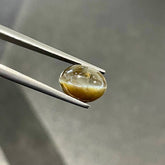
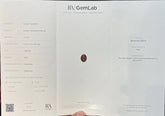
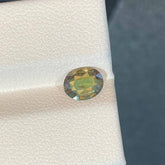
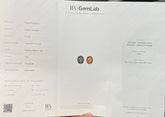
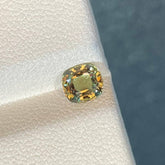

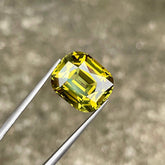
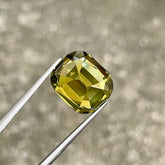
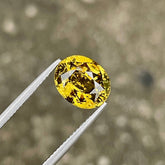
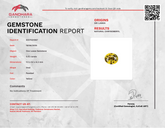
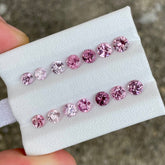

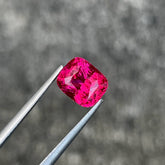

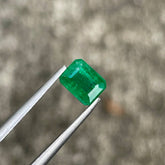

Leave a comment
Please note, comments need to be approved before they are published.